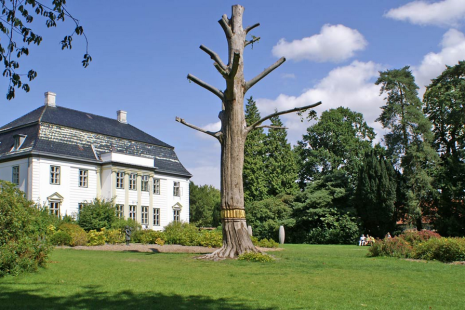For the exhibition The Word for World is Forest at Augustiana, artist and architect Simon Hjermind Jensen explores the potential of the plant kingdom in an architectural context. Hjermind Jensen moves in the intersection between organic architecture and shaped sculpture, and examines how we can relate to form through sympathy. Nature’s forms and the man-made forms that have become our new natural surroundings. When we have sympathy for people, we are “companionists” in their lives, – we share their feelings, sufferings and passions. And without sympathy no relationship or understanding.
The exhibition’s title is taken from a novel of the same name, written by the American author Ursula K. Le Guin. In this ‘tech-fantasy’, plants and forests have superhuman abilities and hyper-sensitive properties. With the title, Simon Hjermind Jensen wants to refer to the fact that forests and plants are the basis of our existence (climate, medicine, food, clothing, building materials, etc.). And, in co-creation with plants, Hjermind Jensen tries to unfold a vision of a future where the boundaries between plants and architecture are blurred. An artistic process in interaction with plants creates inspiration for the architecture.
The climate challenges we face require a radically different way of thinking about the relationship between man and nature. The exhibition’s attempt to co-create with plants is a hope to find alternative methods and get new ideas. The plants can show us resource-optimized forms as examples of how nature’s forms and organic structures can challenge and improve technological solutions.
The exhibition is based on four plants which are examined with the three classical disciplines of architecture; – model, drawing and construction. The hidden idiom of the plants is unfolded in models, and their patterns are examined with drawing, which are interpreted, processed and tested in spatial constructions.
Simon Hjermind Jensen is a trained architect from Det Kgl. Art Academy in Copenhagen and has worked for C.F. Møller’s design studio in London. Subsequently, he has built numerous large structures under his own name. Among other things
F





